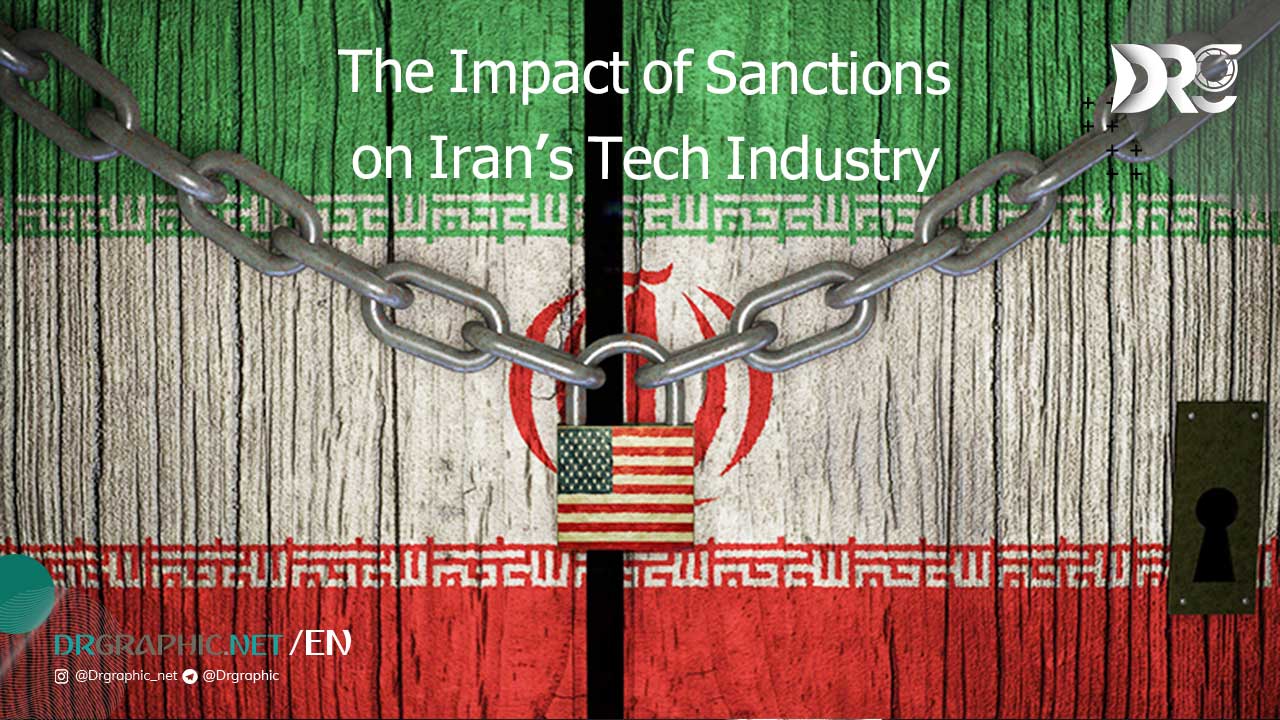The Impact of Sanctions on Iran’s Tech Industry: Challenges and Innovations
Introduction
Sanctions have long been a significant force shaping Iran’s economy, with ripple effects extending across various sectors, including technology. Over the past two decades, these restrictions have intensified, particularly following key events such as the 2010 sanctions targeting Iran’s financial and industrial sectors and the U.S. withdrawal from the Joint Comprehensive Plan of Action (JCPOA) in 2018. The tech industry, often seen as a beacon of innovation, has had to navigate unique obstacles and devise creative solutions to thrive under these evolving restrictions. We previously examined the economic system in Iran but This article from Dr.Graphic explores how sanctions have impacted Iran’s tech landscape, the challenges faced, and the innovations that have emerged in response to these pressures.
Challenges Facing Iran’s Tech Industry
Restricted Access to Global Markets
Sanctions have largely isolated Iran from international trade, making it challenging for companies to access essential hardware, software, and services. For example:
Major tech companies like Google, Apple, and Microsoft limit their offerings to Iranian users. Developers face difficulty accessing global platforms such as app stores or development tools.
This isolation forces Iranian tech companies to rely heavily on outdated or pirated technology, stifling innovation.
Funding and Investment
International sanctions prevent foreign investors and financial institutions from supporting Iranian startups.
Lack of venture capital stifles growth and scalability for emerging businesses. Limited cross-border partnerships further restrict access to cutting-edge resources and networks.
Local startups often rely on personal savings or domestic funding, which is not always sufficient for sustainable growth.
Brain Drain
Iran’s talented tech professionals frequently seek opportunities abroad due to economic instability and limited prospects at home. Many skilled developers, engineers, and researchers migrate to countries with better career opportunities.
This exodus hampers Iran’s ability to build a robust tech ecosystem.
Infrastructure Challenges
Internet censorship and connectivity limitations present additional hurdles. Government-imposed restrictions hinder global communication and digital access.
Limited international bandwidth affects data-intensive applications, slowing progress in fields like AI and cloud computing.
Innovations Amid Adversity
Despite these challenges, Iran’s tech sector has shown remarkable resilience and ingenuity:
Homegrown Platforms and Technologies
Iranian developers have created localized versions of global services to meet domestic demands. Examples include:
Cafebazaar: An alternative app marketplace.
Balad and Neshan: Local navigation apps to replace Google Maps.
These platforms demonstrate how Iranian entrepreneurs adapt to restricted access.
Growth of Blockchain and Cryptocurrencies
Blockchain technology has provided solutions to bypass traditional financial systems. Cryptocurrencies like Bitcoin are used for cross-border transactions.
Blockchain-based applications are emerging in industries like logistics and healthcare. These innovations have opened new opportunities for global collaboration without relying on conventional banking.
Advances in Artificial Intelligence
Iranian researchers are making strides in AI development, creating solutions for local industries, including:
AI-powered healthcare diagnostics. Automation tools tailored for agriculture and manufacturing. Such efforts highlight the potential of Iran’s tech sector despite its constraints.
Startup Resilience
Iranian startups continue to grow, focusing on sectors like e-commerce, fintech, and edtech. Platforms like Digikala (e-commerce) and Sheypoor (online classifieds) are thriving. Startup hubs like those in Tehran and Isfahan foster collaboration and innovation.
Opportunities for Global Collaboration
Even under sanctions, Iran’s tech industry seeks opportunities to collaborate globally:
Partnerships with Other Sanctioned Nations: Countries facing similar restrictions can exchange knowledge and resources.
Regional Trade Alliances: Iran’s tech companies can target markets in neighboring countries like Iraq and Afghanistan.
Tech Hubs: Zones like Kish Island are being developed to attract investment and talent, offering tax incentives and flexible policies.
previously on Dr.Graphic:
Conclusion
Sanctions have undoubtedly created significant challenges for Iran’s tech industry, from restricted market access to talent migration. Yet, the sector’s resilience and creativity shine through in the innovations that have emerged. By continuing to focus on self-reliance, leveraging blockchain technology, and fostering local talent, Iran’s tech industry has the potential to carve a unique path forward.
Resources: WIKIPEDIA _ IRNA _ BBC _ X
How useful was this post?
Click on a star to rate it!
Average rating 5 / 5. Vote count: 2
No votes so far! Be the first to rate this post.












